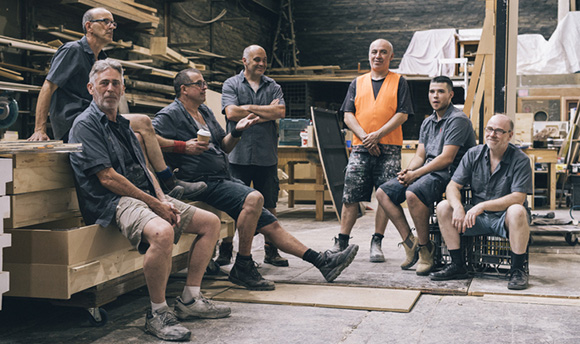
(Photo: iStock)
We need to focus on taking care of the humans in the age of automation.
This is what Wayne Skipper, CEO of Concentric Sky, said to me when I called to talk about the impact of automation and artificial intelligence (AI) on workers. People are being disrupted out of the economy and we need to design them back in. How we do that is one of the topics I’m focusing on during my time at the Institute for the Future as an executive in residence.
Jeffrey Pfeffer, professor of organizational behavior at the Stanford Graduate School of Business, where I am an alumnus, says that 21st-century work environments are hazardous to employees’ health and well-being. He’s concerned that AI could make this situation worse. In his Forbes article, Pfeffer says, “If CEOs today can buck historical trends and place human life and well-being at a par with or even above economic objectives, then workers—and ultimately businesses—will thrive in the age of AI. Otherwise, employees will face a dire future.”
Labor economists will tell you that the decoupling of productivity and people began in the last recession. Even with layoffs, companies largely maintained their productivity levels thanks to technology that handled many routine and predictable tasks. This was unlike prior recessions where productivity dipped when companies reduced their workforce to save on costs. Technology, especially once AI-enabled, will create hyper-efficiency and we need to think about the consequences this has on humans in the workforce.
Decoupling the work from the worker coincided with the gig economy. While the gig economy offers flexibility desired by some, the lack of predictable income, healthcare and other essential safety nets can be problematic for these freelancers, consultants and independent workers. This is especially true for the population of workers that Wingham Rowan, of Beyond Jobs, calls “irregular workers.”
During the 2018 California Economic Summit, Mr. Rowan shared that technology is bringing such an efficiency in scheduling that “workers are increasingly summoned as needed, and paid hour-by-hour” – a far cry from bringing about job stability.
Irregular workers can be animal caretakers, brick-layers, cashiers, drivers, electricians, food servers, gaming dealers, industrial equipment operators, janitors, library assistants, manicurists, nursing assistants, office clerks, personal care aides, receptionists, security guards, tellers, ushers or waiters.
Working for employers who only call you in as needed has its downsides, such as not knowing how to plan for childcare, pay your bills, or schedule other work. No wonder anxiety is growing across America when there’s such precariousness for workers. This is not the right direction to move in if we want healthy communities.
Today, there are an estimated 56.7 million freelancers in America according to the fifth annual “Freelancing in America: 2018,” a study from Upwork and the Freelancers Union. The gig economy is becoming the new norm, and people need to continually learn, reskill and adapt in order to succeed. To help ensure their success, policymakers, educators, and workforce development practitioners need to focus on humans and create a more equitable future.
The future of work integrates technology and humans, changing the way we work and the skills needed in order to work. During a brainstorm session on the Future of Work hosted by the Autodesk Foundation, we examined four scenarios from the vantage point of a building inspector, and if and how his/her job would change because of technology. In all cases, the answer was yes.
For example, drones would be used to conduct inspections, enabling oversight of many more construction projects. Or junior technicians would do physical walk-throughs while a well-trained inspector would use augmented reality glasses to look through their eyes, begetting greater efficiency. Workers will need to adapt to these changes, as well as learn new skills in order to succeed.
Technology can also address many mentally routine and predictable or repetitive tasks. While attending a Stanford mediaX workshop, representatives from Getty Images shared that they use AI to sort, index, and catalog millions of images for use by its customer base. Using AI saves time and money – this task would otherwise require an inordinate number of people to perform – and makes less mistakes.
But if AI has the consequence of moving more people from stable to unstable employment in the gig economy, then we need to work now to redesign the gig economy so that it works for humans.
The Jobs for the Future 2018 report aptly states, “To prepare a workforce for automation and the gig economy, policymakers, educators, and workforce development practitioners must address the demands of the future economy.”
I hear a call to action.
Let’s start with a design thinking session of the best minds, with a range of expertise and viewpoints. The team would include experts in insurance, 529s, workflow, technology, platforms, independent worker services, labor law, and unions coming together with large and small employers, educators, public agencies with safety net services, workers of a variety of situations, and policymakers
Our task would be to concept out what structures need to exist and what laws would have to be put into place in order to facilitate a digital economy where humans are the focus, not the afterthought.
We can definitely take care of humans in the age of automation. Who else agrees?
Follow Van Ton-Quinlivan at @WorkforceVan and on Medium.

